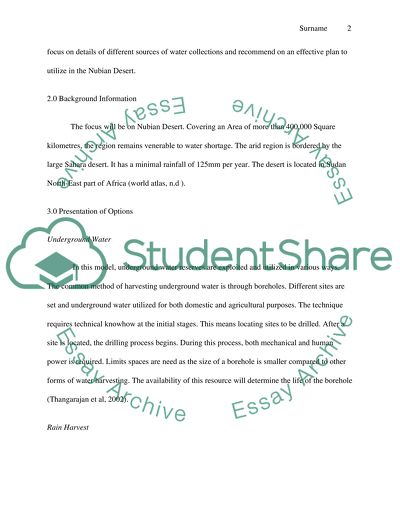Cite this document
(Feasibility of Different Techniques for Providing Fresh Water Case Study - 5, n.d.)
Feasibility of Different Techniques for Providing Fresh Water Case Study - 5. Retrieved from https://studentshare.org/environmental-studies/1685289-write-a-report-assessing-the-feasibility-of-different-techniques-for-providing-fresh-water-to-arid-regions-of-the-world
Feasibility of Different Techniques for Providing Fresh Water Case Study - 5. Retrieved from https://studentshare.org/environmental-studies/1685289-write-a-report-assessing-the-feasibility-of-different-techniques-for-providing-fresh-water-to-arid-regions-of-the-world
(Feasibility of Different Techniques for Providing Fresh Water Case Study - 5)
Feasibility of Different Techniques for Providing Fresh Water Case Study - 5. https://studentshare.org/environmental-studies/1685289-write-a-report-assessing-the-feasibility-of-different-techniques-for-providing-fresh-water-to-arid-regions-of-the-world.
Feasibility of Different Techniques for Providing Fresh Water Case Study - 5. https://studentshare.org/environmental-studies/1685289-write-a-report-assessing-the-feasibility-of-different-techniques-for-providing-fresh-water-to-arid-regions-of-the-world.
“Feasibility of Different Techniques for Providing Fresh Water Case Study - 5”, n.d. https://studentshare.org/environmental-studies/1685289-write-a-report-assessing-the-feasibility-of-different-techniques-for-providing-fresh-water-to-arid-regions-of-the-world.


